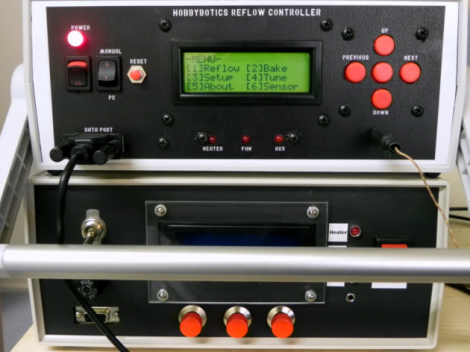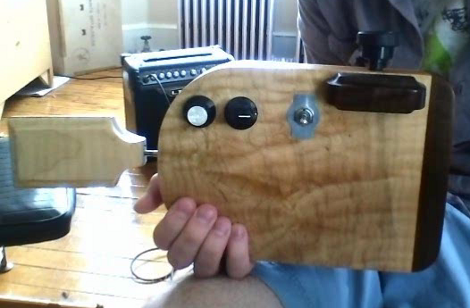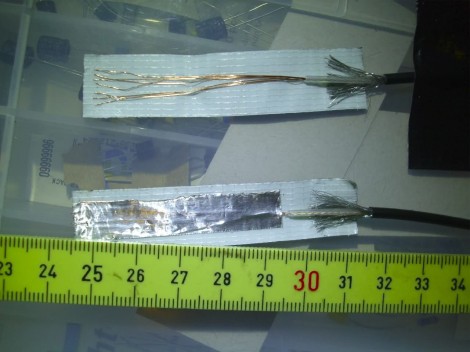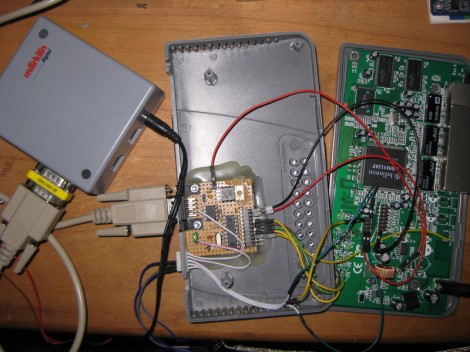
This project may take the cake on high-end reflow retrofits. It’s a HUGE project which uses a toaster oven to reflow surface mount circuit boards. And the fact that it bursts with features makes us giddy.
So what parts have we come to expect on these devices? Obviously a heat source which usually comes from a reused toaster oven. Then you need a way to switch the heating elements on and off based on feedback. Since solder profiles have precise timings and temperatures a clock is usually involved. All of this can be done with a temperature probe on a multimeter and a smartphone as the timer. But what we have here is full-automation and then about a thousand more features.
The driver above has a full user interface. It’s got its own PID routines which help to ensure proper holding temperatures and accurate ramping when going from one temperature to the next. The cable exiting the controller below the red buttons is providing feedback via a thermocoupler. So program in your solder profile and let it go. But wait, don’t you want to record and graph what actually happened during this reflow run? Well that’s what the serial connection is for. In fact, you can even load new profiles and control all aspects of the device from a PC interface.
Switching for the toaster oven is done in a different way as well. Instead of just switching mains power, the circulation fan and the heating elements have been electrically separated. This way the fan can run whether the elements are on or not.




















